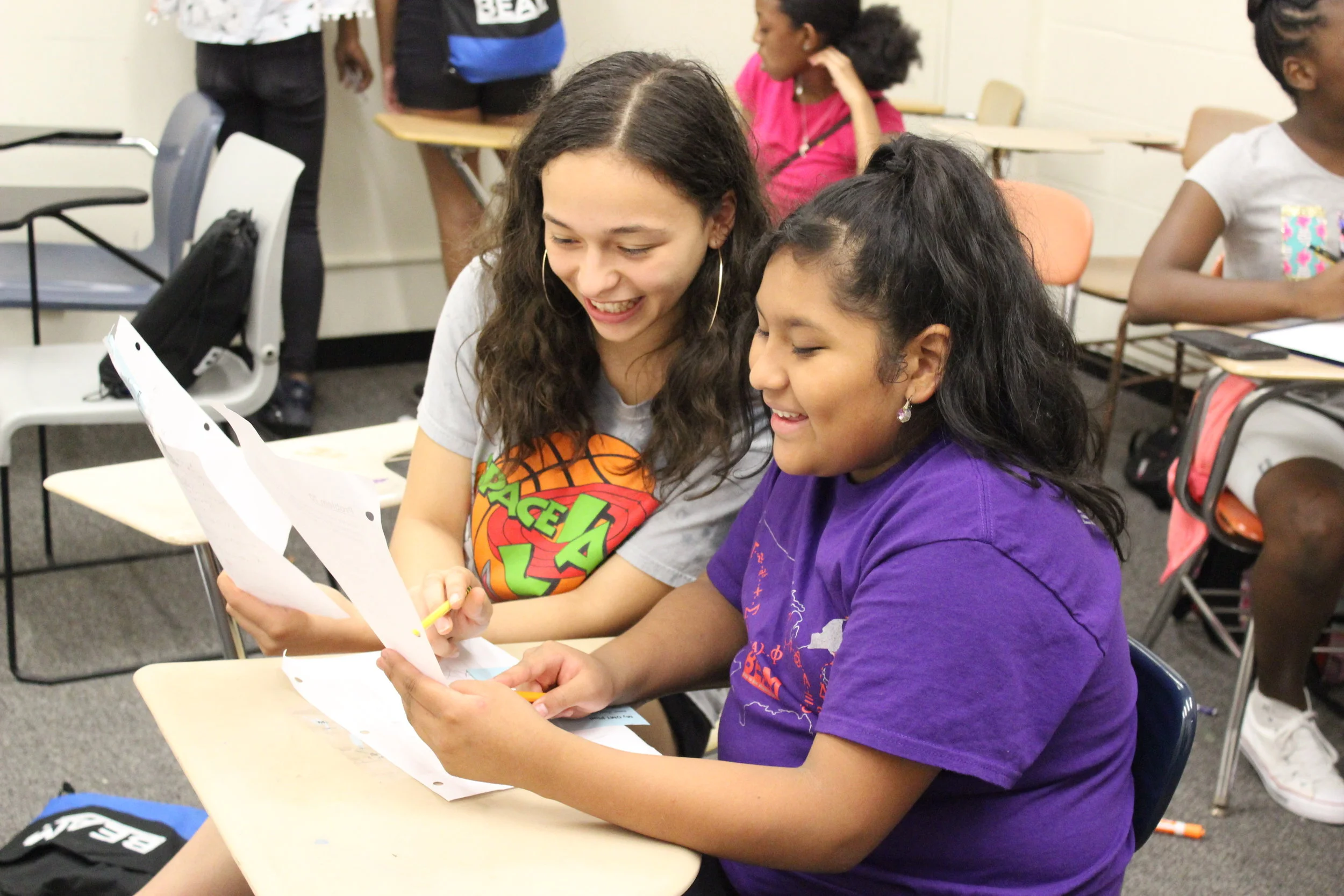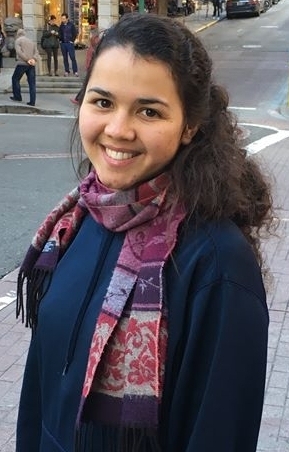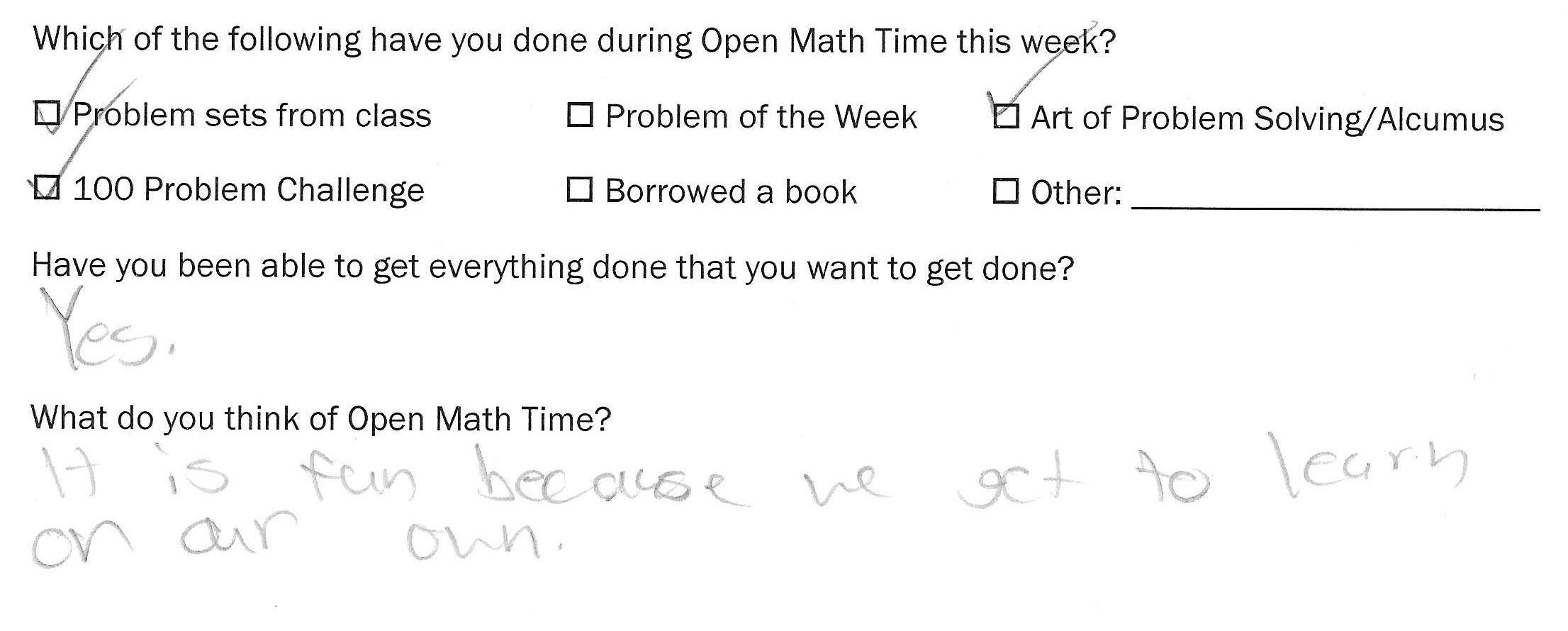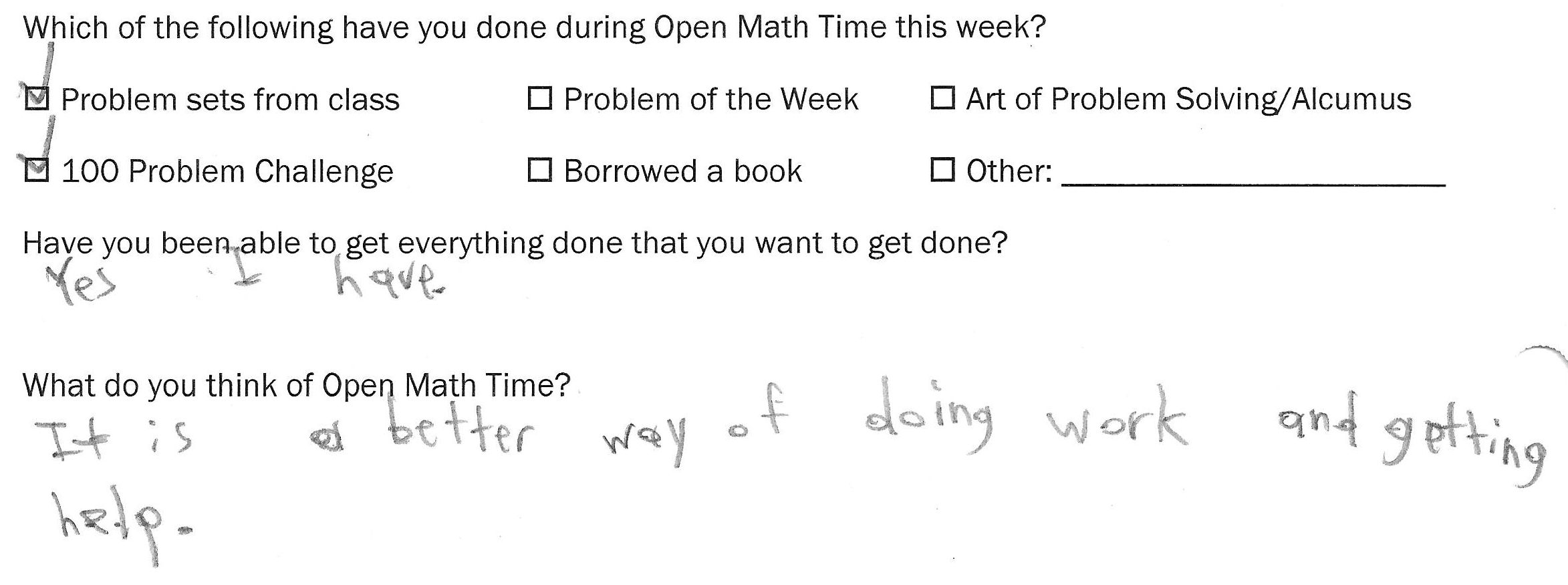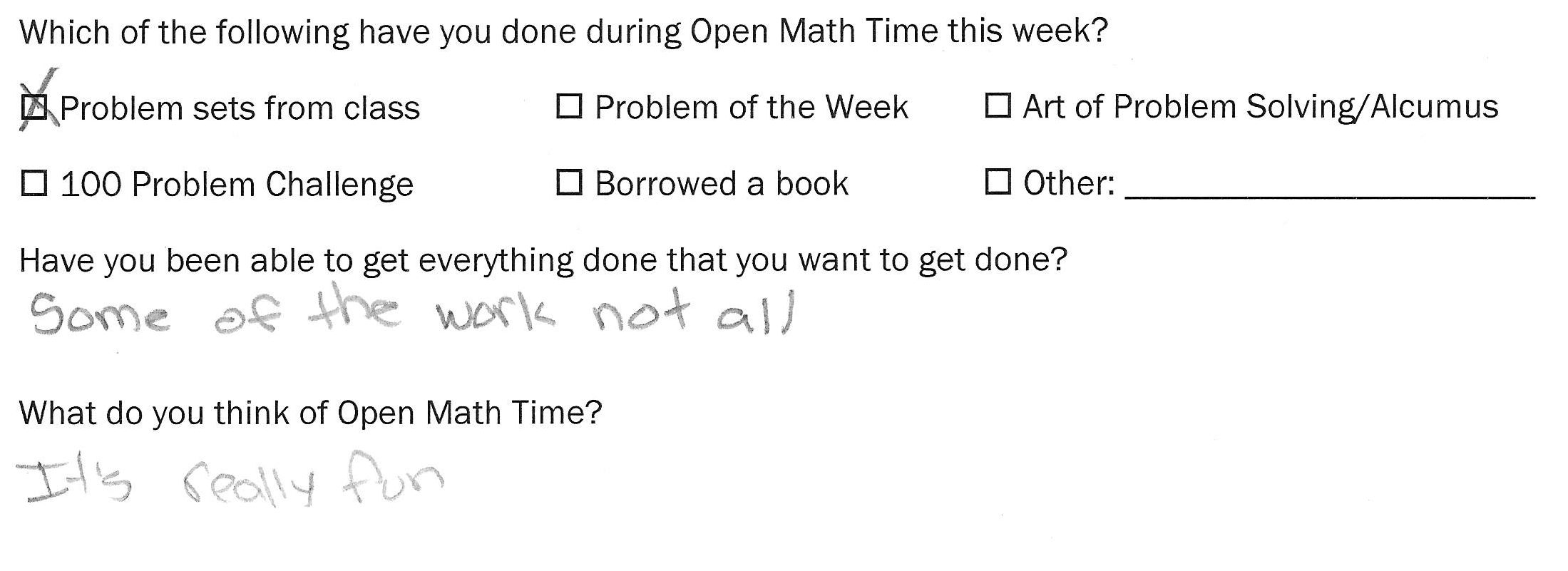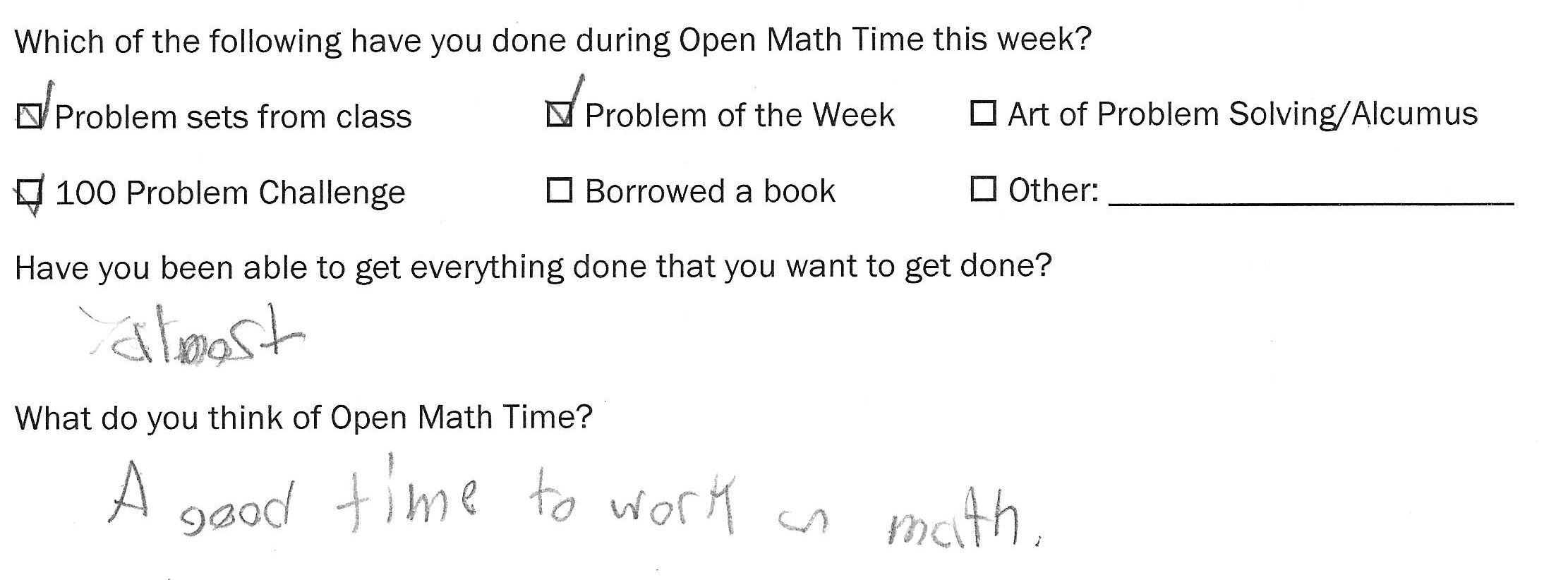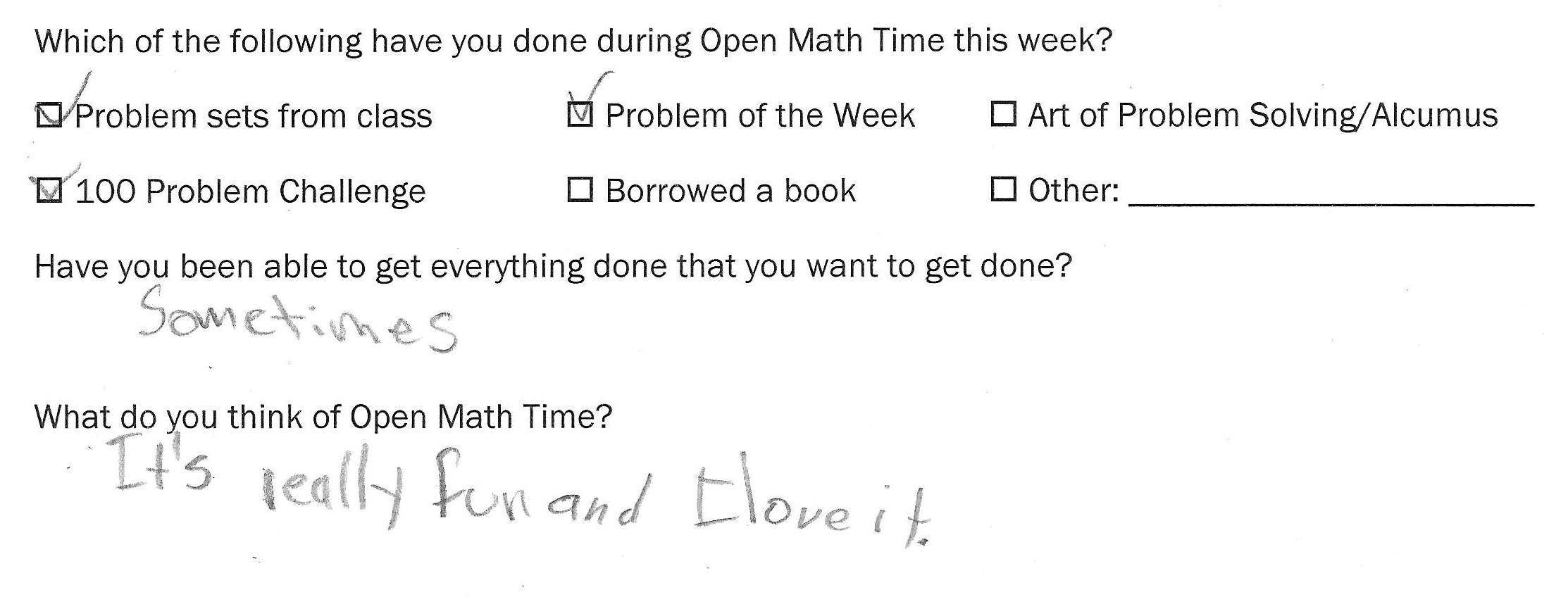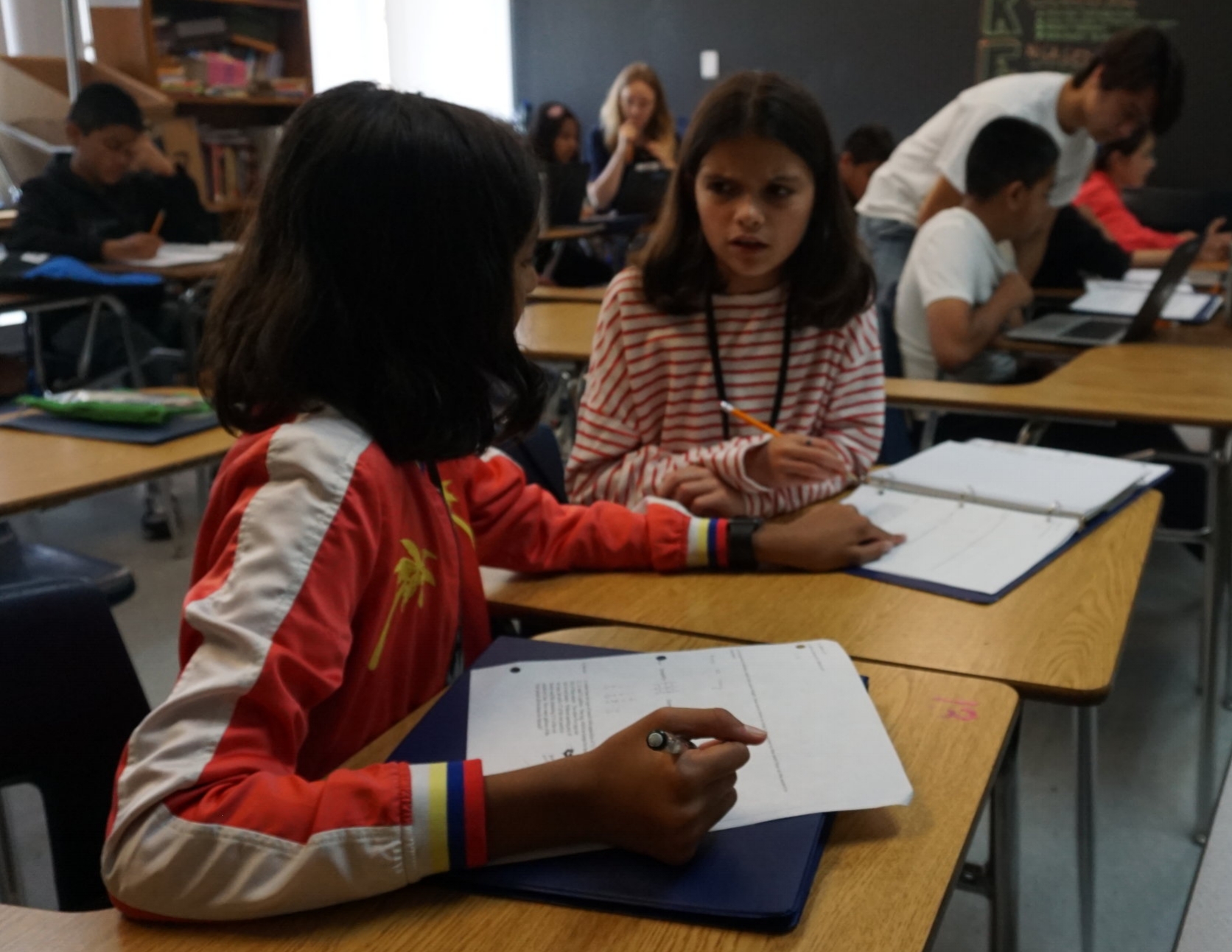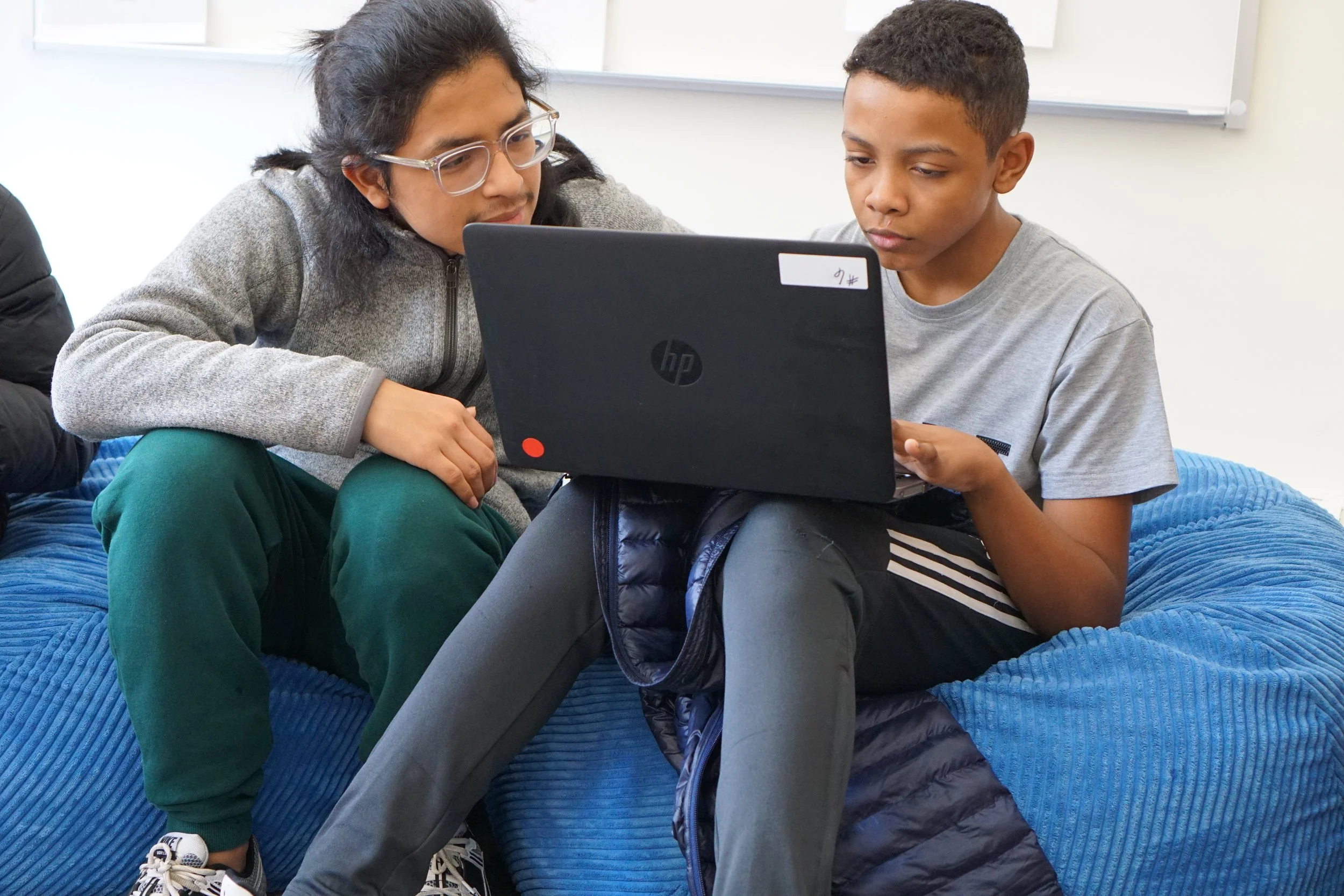
Welcome to the BEAM Blog!
Infinities, Graph Theory, Game Theory, and Traveling Circuses: What Mathematicians Talk About When They Visit BEAM
This winter, BEAM is busy! We are busy hiring summer faculty, summer counselors, and other summer staff and even a few full time staff. But those aren’t the only positions we are looking to fill. Every summer we invite guest speakers to BEAM Summer Away and BEAM Discovery sites. Our invited speakers are talented mathematicians from around the world, and their talks are a window into the work of professional mathematicians, giving students an opportunity to learn new ideas from the wide world of mathematics. Some past speakers have focused on complex mathematical topics, while others share their day to day life as career mathematicians. As we line up further intriguing talks for this summer, now is a great moment to reflect on some of the lovely talks and mind-bending math our guest speakers shared with us last summer.
This past summer our guests included Dr. Edray H. Goins, Dr. Susan Loepp, Tai-Danae Bradley, and Darleen Perez-Lavin. They each presented a unique take on a mathematical topic and BEAM students got a kick out of what they had to share.
Edray confronted a complicated topic: infinities and cardinality. Though this topic is deep and challenging even for mathematics majors at top colleges and universities, Edray balanced the abstract ideas with concrete examples. He started with basic ideas and questions: What is a set? How can you count things in a set? How many subsets are there in a set with n elements? Then the talk got more abstract, and Edray lead students through a very enjoyable explanation of Cantor's famous theorem. Students had the chance to see how much there is to the mathematical world than just numbers, equations and geometry formulas.
BEAM values having guest talks that start out very friendly to students and then go off the deep end in mathematics a bit because they allow students to see just how serious and deep math can be!
Dr. Edray H. Goins is a Professor of Mathematics at Pomona College in Claremont, CA and president of the National Association of Mathematicians. Edray presented at BEAM Discovery Los Angeles.
Dr. Goins presents to the students at BEAM Summer Away during Vassar 2016. Edray has been a guest speaker at BEAM for three straight summers!
Dr. Susan Loepp, Chair and Professor of Mathematics, Williams College. Susan presented at BEAM Summer Away at Union College.
Susan introduced a team game that involved wearing hats. It costs money to play, but if you win, you get the cost doubled back. Will you win or lose money in the long run? Susan gave student volunteers a chance to play the game (not with real money) and think about optimal strategies. After a lot of trial and error (and some inadvertent cheating), students claimed to Susan that they could win 50% of the time. But she said they could do better! The rest of the talk focused on independent and dependent probability and how those concepts impact game theory. Students found the session fun and silly, yet thought provoking. Many were still talking about it the next day!
Tai-Danae came into the room with lots of brightly colored cubes. The purpose? The Instant Insanity puzzle. Everyone got four cubes with each face colored in one of four different colors. The question: can you make a stack four cubes tall so that each side of the stack has one face of each color? With over 80,000 possible configurations, this is a big challenge, but using the tools of graph theory you can solve it quickly! If you're curious, Tai-Danae also presented it on PBS Infinite Series and you can take a look and try it yourself.
Tai-Danae Bradley is a PhD candidate in mathematics at the CUNY Graduate Center, and creator of the intriguing math blog: https://www.math3ma.com/. Tai-Danae presented at BEAM Discovery NYC Uptown.
Darleen Perez-Lavin is a SMART fellow and graduate student at the University of Kentucky. Her talk was based on quantum computing research at Fermi National Accelerator Laboratory. Darleen presented at BEAM Summer Away at Union College.
Darleen gave a presentation on the Traveling Circus Problem, a more general version of the well-known and very difficult Traveling Salesman Problem (so well known and difficult that the University of Waterloo has a whole website devoted to it). Darleen presented new research on how this problem is related to quantum physics. Her talk gave a glimpse into how pure mathematics can have applied applications. The ideas jumped from Euler's solution to the Seven Bridges of Königsberg problem to talking about modern physics! Students interested in applied mathematics were especially fascinated.
We can’t wait to see all the amazing talks that this upcoming summer has in store. And if you enjoy cool math (and aren’t quite as busy as BEAM is at the moment), we encourage you explore the topics touched on in the talks above.
BEAM students play a game during Dr. Susan Loepp’s math talk at BEAM 2018.
Reflections on BEAM 6 LA
“Thank you for such a great experience at BEAM. BEAM has made this summer the best summer of my life. I won’t ever forget about BEAM and will keep on exploring math.”
Recently, we asked Jacob Castaneda, BEAM's Executive Director of LA Programs about the first summer of BEAM 6 Los Angeles. Here's what he had to say:
It’s hard to believe that the first summer of BEAM 6 LA is now complete. On any given day, you would see an assortment of activity: frustration and enthusiasm from problem solving, silliness during breakfast, curiosity during class, passion during Open Math Time. Above all, you could feel a strong passion for deep mathematical thinking. The program was a success, and I firmly believe that the thing that tied it all together was the students' camaraderie and the understanding that everyone was at the program to grow.
From left to right, Sharon, Daniel, Rihighna, and Valerie work on problem sets during OMT.
Clockwise from left: Emily L., Matthew, Adila, Galadriel (Counselor), Adib, Jarek working on one of the 100 Problems.
You could walk into any classroom this summer you would find students engaged in conversation around their mathematical thinking. I miss Open Math Time the most; I loved walking around and talking to groups of students collaborating on problems, having productive discussions and trying to explain their thinking to their peers.
Without fail, I could always find Sofia, Abigail A., Fernando, Oscar, Matthew, Adila, and Emily L. sitting with a counselor in the hallway outside of the trapezoid-shaped room, working on one of their problem sets or some other interesting puzzle.The music room had a high-energy group that liked to verbalize their solutions to problems, especially when twins Brissia and Rubi worked with Angel.
David (right) and Erick A. (middle) solved one of the challenge problems, so Meghan (left) writes their names on the poster.
Sometimes, Oscar would break from the trapezoid crew to work with Adib and Jarek on one of the remaining problems from the 100-Problem Challenge. Nearly half of the challenge problems were solved by groups of 2 or more students!
Faculty members also played an essential role in creating a strong community of mathematicians. Sam, our cryptography instructor, had students work in groups for weekly scavenger hunts whose clues were only readable through deciphering some code using a decryption technique learned in class. Diana had her math fundamentals class work in teams to analyze and interpret translations in Euclidean space. A math professor from Harvey Mudd visited our combinatorics class and was moved by the teaching strategy employed by Javier, the instructor. In that class, students were presented with a combinatorial pattern and asked to develop a conjecture and share it with their classmates, forming groups based on common reasoning and working to validate or invalidate others' conjectures.
Math relays, held every Friday afternoon, gave students a chance to work in teams to solve challenging math problems. Staff members selected which students worked together, giving students an opportunity to work with new people each week. It was an absolute joy to see mixed groups work together, often for the first time, and achieve success with the problems. The buzz during Relays was palpable, and students were encouraging towards one another, even when they weren't on the same team.
It's great to see the excitement about BEAM spill over into the start of the school year. We've received several submissions for the first challenge set and interest for pre-algebra classes. We expect to continue the mathematical momentum during our next math competition, set to take place in early November.
The unity among students was evident throughout the program. They supported one another in problem solving, combining their efforts to arrive at solutions. It was clear that the BEAM 6 community boosted the confidence of several students and left a lasting impression on their math journey.
But don’t take my word for it! Here’s what our summer students had to say about their experience at BEAM 6:
On the topic of Open Math Time, Rubi says "It was cool because I got to work with other people."
Rubi is a student at New Open World Academy.
"I feel more confident in myself."
Edilson is a student at Alliance Richard Merkin Middle School.
"I've gotten smarter & it's easier to work in groups."
Cherokee is a student at UCLA Community School.
"I achieved learning new things. I can apply the things I learned here in school and maybe even teach my friends at school about the things I learned."
Jamie is a student at the New Open World Academy.
"At first, I didn't felt [sic] like going to BEAM but then you supported me and I got accepted. Now I feel like BEAM is a family to me. Thank you."
Daniel is a student at Young Oak Kim Academy.
4 for 15: An hour of class at BEAM 6 Uptown
This month, we're welcoming three new full-time staff to BEAM! One of them, Alyssa Loving Jung, is BEAM's new Development and Communications Coordinator. She spent her first week at BEAM visiting BEAM 6 and wrote this blog post about her experience. Welcome to the team, Alyssa!
----
My goal is to sit in on four of BEAM 6 Uptownʻs math classes in a single hour. While I may have an advanced degree in mathematics (a Master's to be precise), it is an ambitious plan. I am eager to see what mathematics the BEAM 6 students will be tackling today.
----
To start off, I get to join the very beginning of a class that appears to be about exponents… or maybe number theory? I am not quite sure. On the board there is a question that immediately catches my eye.
What is the ones digit of 569,423^22?
I can't help it. I immediately start scribbling work in my notebook trying to solve the question. But as discussion swirls around me, I am pulled away from my attempts to solve the problem, curious as to what the students are coming up with. Students wonder out loud how to deal with a problem like this without doing a dizzying degree of multiplication. The instructor, Juan, offers a friendly warning that such an approach would take much more time than they have in class. Returning to my page of notes, I gather from my own work that the key to the problem lies in spotting a pattern and not getting lost in the cumbersome calculations.
Emily works during class.
Around me, I can hear students closing in on the pattern, and it is such fun that I must force myself to remember that I only have 15 minutes at most with them before I have to head to the next class.
Even before my time is up, one of the students is up at the board presenting an idea.
Collaborative mathematics, the courage to expose a budding solution, a still green idea, to an entire class of peers, is a crucial element of pursuing advanced mathematics. I am delighted that BEAM students are engaging with each other and their faculty like this. But glancing at the clock, I must tear myself away and head to the next class.
----
Here there is a very different sort of picture on the board.
There are intersecting circles drawn and numbers scattered about. A student is at the board placing a number with care. While the numbers seem haphazardly distributed at first, the thoughtfulness of the student is the first clue that something more is going on. Then I notice the labels: factors of 6, multiples of 6, primes.
They are exploring logic. The strange picture on the board I recognize as a Venn Diagram, a way to visualize the overlap and interplay between different sets.
They move on from the Venn Diagram on the board to start working on a sheet of problems. A student notices ambiguity in one of the problems. The problem asks them to explore the statement "not A or B". He wonders if the instructor, Sian, means "(not A) or B" or rather "not (A or B)".
The whole class takes time to investigate this subtlety. The process reminds me of writing math proofs during graduate school. Oftentimes the tiniest turn of phrase, the most minute missing detail, can make or break a complex mathematical argument. I am excited to see that the students are taking such care with the reading and writing of mathematics. But it is time for me to move on to my third class.
TA Amaya works with student Karen on a problem set during Open Math Time.
----
Yorlan works on an advanced geoemetry problem.
This class says Geometry and Logic in the corner of the chalkboard at the front. Apparently, it is another class on logic, but now there is geometry thrown into the mix. I am intrigued.
The instructor, Xavier, is energetic and he calls each student by name as he peppers the room with questions.
He wonders how we can figure out what c is when we know c^2=8. A student calls out that c is the square root of 8.
Xavier follows up, smiling, to see if Eduardo was just guessing, but no:
"No, I didn’t guess..." Eduardo responds, "It's 'cause taking the square root is the opposite of squaring something."
I am impressed that in one sentence Eduardo has gotten at the heart of what mathematicians mean by inverse equations. It is a concept that can confound even college students. But I can’t stay for more insights today.
----
I am off to my final class. As I slip into my seat, I am startled to see scrawled across the board: "Are there Aliens in the Milky Way?"
A massive equation containing many letters is sprawled somewhere beneath it. The students are clearly in the process of grappling with the equation and what it means. The instructor, Susan, asks them to replace L = (1/10)^8 in their previous calculation, with L = (1/10)^2. Immediately, diligent pencil-scratching begins, heads bent, eyebrows furrowed with concentration.
This is what I call the "dirty work" of mathematics. Complex computations don’t encompass what mathematicians do. Mathematicians are much more than mere human calculators after all. But such calculations do form an important aspect of the job of many mathematicians and scientists. BEAM students in this class are building the patience and the stamina to handle even very complex formulas, and learning some mind-boggling astronomy at the same time.
Taro, a TA, observes Jamal as he contemplates a large numbers.
Meanwhile, I have set a new personal record for how many classes I have attended in one hour, and better yet I have had the chance to think about some really cool math. I cannot wait for what the next hour of BEAM 6 has in store!
----
Curious about the classes that Alyssa visited? BEAM 6 students all take classes in our four topic areas: Math Fundamentals, Logic, Math Team Strategies, and Applied Math. Within each topic, students get to choose from a menu of classes, so they each take a class that inspires their curiosity. In the mornings, when Alyssa was visiting classes, students were in either their Math Fundamentals class, which explores the why of elementary math, or Logic class, which focuses on how to justify your reasoning. Juan and Susan were each teaching Math Fundamentals courses, while Sian and Xavier teach courses in the Logic track.
Here are the full course descriptions for the four classes she visited!
Exponents: The Super-Powers of Numbers! (Juan)
Using the power of multiplication, we will build some really, really big numbers and compare them to see which ones will turn out to be the biggest. We'll also explore a strange planet which only has 11 numbers in it!
Cryptarithms and Other Arithmetic Puzzles (Sian)
If A + B = AC, then what is A + B + C? Cryptarithms are math puzzles where the arithmetic is simple but the "thinking part" of the puzzle is challenging. We will start with simple problems and build up a tool chest of logic strategies for solving these problems and all math problems.
Geometry and Logic (Xavier)
Ever look at a problem and not know where to start? This class will develop your ability to solve complex problems. We will learn how seemingly incomplete information can be combined to form complete solutions.
Big numbers, Small numbers, and In between (Susan)
Imagine you have a very long number line, with every number you’ve discussed this year in school on the number line. A new number is introduced. Where does it go? Are you sure? In this class, we will use a variety of tools (brain power, rulers, logic, and more) to identify the big numbers, the small numbers, and the ones in between.
Learning The Game: Po-Shen Loh's Guest Talk at BEAM 6
Po-Shen Loh, mathematics professor at Carnegie Mellon University, coach of the U.S. Math Olympiad team, founder of Expii, and self-professed math enthusiast, takes the stage at BEAM 6. His audience is the nearly one hundred 6th grade students that make up BEAM 6's Uptown site, along with their counselors, a mix of college students and high schoolers, and the faculty and staff members that run the program.
Po-Shen exudes energy, and it is clear that the BEAM students are prepared to match his exuberance. When he calls for four volunteers, there is an immediate, delighted clamor to be chosen. Amid a tumult of waving hands, the four lucky ones join Po-Shen at the front.
The student volunteers stand on the stage, two on either side of a waist-high table. Each pair has one die between the two of them. Each person has one responsibility. One of them will role the die, the other will check the number for their team. The rules of "The Game" are simple:
- Each team has 4 rolls.
- After each roll, they switch dice.
- After each roll, they add their number to the numbers previously rolled.
- Whoever has the highest sum at the end wins The Game.
Po-Shen along with Nashle, Crisbelly, Angel, and Amire
Is The Game fair?
Po-Shen drops the question like a firecracker. The room explodes with excitement.
Ideas dance like dice. Laughter bounces, loud, off the walls. Counselors smile and gently shush. Po-Shen grins and throws his arms outward in a gesture that embraces the raucous enthusiasm. He brings his hands together drawing the room back to focus, channeling the bountiful energy, creating a space for solutions to be spoken.
Hands shoot up like rockets. He sifts through, shifting from one student to another, piecing together a pattern, a picture. He grabs a question from one student, an answer from another. All of it guides us towards unraveling the mathematical mystery of whether The Game is a fair one or not.
But scarcely have we settled on an answer to that question, when Po-Shen poses another.
Could there possibly be a strategy to such a game?
Strategy is such an intriguing word. It practically brims with adventure. But how could dice be thrown with strategy? Arenʻt dice devices of chance? What cherished games might be upended by the notion of a strategic dice throw?
Po-Shen introduces a key element to The Game as he is playing it, which changes the strategy. Have students noticed anything about these dice? How are standard dice constructed? Students note that they tend to have numbers that sum to 7 on opposing faces: 1 is directly opposite 6, 2 is opposite 5, 3 is opposite 4. Why? It turns out that Po-Shen has dice with 1 facing 2, 3 facing 4, and 5 facing 6. How does this change the game? Why did Po-Shen manufacturer such dice? (We'll leave that question open for you to figure out, but it turns out that the answer transforms this game from a game of chance into a game of strategy.)
Some of the BEAM students in the room were especially intrigued by the strategies that Po-Shen explored with them.
Amire, one of the four BEAM students to play the game, said "I was amazed that there was a strategy. That really amazed me." In fact, when I asked him what his favorite thing about the talk was, he answered, "Learning the strategy. Now I know how to win Monopoly."
Deanna
For Deanna, one of the BEAM students in the audience, the element of strategy was also memorable. "It was interesting, because he talked about strategies. It was complex because it was something I personally didn't know about." In talking about Po-Shen, she says, "He was interactive."
Po-Shenʻs excitement as he shared his game, his questions, and his strategies with the students was tangible. Ultimately, what he communicated was a genuine love for mathematics.
Amire, who grew animated just as he recalled the talk, said this about Po-Shen: "He is really good at math and he likes it." Amire contrasted this with people who may excel at math, but donʻt enjoy it. The fact that Po-Shen enjoyed his work as a mathematician was not only evident to Amire, it was important.
As he spoke to us, Po-Shen himself looked beyond skill in mathematics. While his confidence in the mathematical prowess of his audience seemed as clear as his beaming smile, he closed his talk asking for even more than that.
"Math is power," he said.
"Now that you have great power, you must use it for good."
There's a lot going on at BEAM 6 NYC!
BEAM 6 NYC has been underway for three weeks, and the students and staff have a lot to show for it! Since the first Monday, binders have been decorated, balls have been spiked, mafia members have been investigated- and that’s all just in activity periods!
For staff members, the fun started a week before the program for setup where they turned New Design High School (NDHS) into the official BEAM 6 Downtown site. There they taught each other new strategies for problem-solving and how to support students throughout this five-week program.
The program officially kicked off officially on Monday morning when the students met with their travel groups (or traveled alone) and came to NDHS. Upon arrival, the students got to know each other, the staff, and an overview of the program.
Throughout the rest of the week students were able to experience four types of classes that they’ll be in for the rest of the program; Logical Reasoning, Math Fundamentals, Math Team Strategies, and Applied Math. Each of these topics have different instructors and each instructor teaches a different course, so there’s never a dull moment during lunch when the students talk about what they learned earlier that day.
All in all the students have had a great start of camp and made connections that will last them throughout the program, and hopefully throughout life!
Check back soon for another post soon: Staff profiles!
What do 6th graders love about BEAM? Open Math Time!
With BEAM 6 Los Angeles' first two weeks in the book, we thought we'd take a minute to talk about one of the students' favorite parts of the day: Open Math Time! Every day at BEAM 6 includes four hours of academics: two hours of class and two hours of Open Math Time (OMT). During OMT, students choose from a menu of options, or propose their own work. They can do basically anything mathematical! Students can work individually or in groups; as long as the time is productive, any arrangement is fair game! OMT exists for a number of reasons:
Zavier (BEAM '11), right, supports students in a BEAM 6 LA classroom.
- BEAM classes don't assign homework, because it just doesn't seem right for a summer program! But, it's important to practice new ideas to really learn them. So, students use some of their OMT for short, required Problem Sets (PSets) from each class.
- BEAM believes in flexibility and choice. We want students to build the best possible summer for themselves!
- Middle schoolers are learning a lot about themselves. Students may never have been given the flexibility to choose their groupings or tasks. This is a huge opportunity for growth.
- Strong mathematicians become stronger by spending more time on math. By sharing with students the joy of self-paced, self-directed learning, we give students the tools they need to challenge themselves to learn independently.
Ever since our first summer of BEAM 6, students have raved about OMT. It becomes many students' favorite part of the day. And our BEAM 6 LA 2018 students are no different! Here are some reviews from our early program survey:
As you can see from the check boxes. students have a suggested menu of options for how to spend their OMT. Most students chose the following options:
PSets From Class
Every member of the faculty gives students about 15 minutes worth of extra work at the end of each class in the form of problem sets. Problem sets (PSets) are designed to help students practice and solidify new skills, extend understanding, and explore curiosity. For example, a student in a KenKen class might solve a more challenging puzzle, while a student learning to program in Python might add a new command to the program they're writing. Students working on PSets can head to their teacher's classroom to chat about the work and ask for support.
Want a flavor of a PSet? Here are some sample problems from two of our classes:
Exponents: The Super-Powers of Numbers
Find a number with five or more digits, all 0s and 1s, that is 7 in Z11 (in other words, it has a remainder of 7 when divided by 11).
Voting: How to Run a Country
A group of 4 friends want to do the same activity during activity time. Their options are to do any of the following: soccer (S), drama (D), frisbee (F), board games (B), or painting (P) and they decide to use Borda Count to decide the activity they should do. Consider the table of preferences below:
a) 5 points are assigned to a 1st place vote, 4 points to a 2nd place vote etc. What activity is the Borda count winner in this instance? (Make sure to give the Borda scores to justify your answer).
b) Is it possible for only one person to changing their ranking (in any way) so that painting is the only Borda count winner? If so, give the person and their new ranking and the new Borda counts of each alternative. If it is not possible, thoroughly explain why it is not possible.
100 Problem Challenge
Students work on a problem during OMT with their counselor Paula, right under the 100 problem board.
This is exactly what it sounds like: a hundred problems selected by Dan Zaharopol (BEAM Founder and the Executive Diretor of the Art of Problem Solving Initiative, Inc.) to challenge the students mathematically and bring them just to the edge of mathematical proof. There’s a big board with 100 spaces for the 100 problems, and we write in the names of students who’ve completed problems. If all 100 are solved before the end of week 5, the entire program wins a prize!
Try out a sample problem for yourself:
Problem 1
A friend tells me that she has three children, and that if you multiply their three ages you get 72. “I don’t have enough information to figure out how old they are!” I reply.
“All right,” she says, “if you add their ages, you get the street number from my address.”
I know where she lives, so I do some calculations. “I still don’t know how old they are!” I reply.
“Well,” she replies, “the oldest is really good at chess.”
Now I know how old they are. How old are her children, and what is her street address?
The state of the 100 problem challenge at the end of week 1.
Art of Problem Solving/Alcumus
Students, hard at work!
Another major goal of BEAM is that our students (new to enrichment math) have access to the same resources and opportunities that other middle schoolers all over the country already have! So, we connect them all with accounts for the Art of Problem Solving (AoPS), and encourage students to start with Alcumus. Alcumus is a free, self-paced tool that works students through math skills, starting at pre-algebra. It's fun and it's something students can use for years to come!
Becoming familiar with AoPS and Alcumus know will have major benefits to BEAM 6 alums during 7th grade, as AoPS offers a free, online pre-algebra course to any BEAM 6 alum who completes the Alcumus pre-work to demonstrate to BEAM that they plan to take the course seriously. And as our students age, we sign individual students up for AoPS classes whenever they need an enrichment boost, and are looking to challenge themselves (the combinatorics and number theory classes are a particular hit!).
We're so glad students are enjoying OMT and the rest of BEAM 6. It's clear that BEAM 6 Los Angeles is off to an incredible start! Want to read more? Check out what our own Executive Director, Dan Zaharopol, had to say on his blog:
A Day in the Life of BEAM 6
It's Friday which means we are nearly 20% of the way finished with BEAM 6 Los Angeles 2018. Where did the time go??
So, what is a week like at BEAM 6? Each day features:
- Breakfast
- Morning class
- Open Math Time
- Activities
- Lunch
- Afternoon class
- Open Math Time
- Activities
Let's dig deep on each of those blocks!
The day begins with a balanced breakfast, served a la carte in the cafeteria.
Academics
Then, it's off to class! Students at BEAM take four classes, one each in the following tracks: Logical Reasoning, Math Fundamentals, Math Team Strategies, and Applied Math. At the beginning of the summer, students selected which version of each class they wanted to take. Their options were:
- Logical Reasoning:
- KenKen Puzzles and More
- Ultimate Brain Puzzles!
- Elementary, My Dear!
- Liars, Truthtellers, and More
- Math Fundamentals:
- Fractions and Food
- Exponents: the Super-Powers of Numbers
- Patterns, Lines, and Number Rules
- Applied Math:
- Introduction to Cryptography
- Voting: How to Run a Country
- Computer Programming
- Math Team Strategies:
- Using Patterns to Solve Problems
- Counting Without Counting and Fantastic (Number) Beasts
- Words, Meet Numbers: An Algebra Story
Don't those sound fun? How did students choose?? Each instructor gave a course description and a sample problem! Here's one set to consider!
Elementary, My Dear!
Course Description:
Ever wonder how detectives like Sherlock Holmes solve complicated mysteries? It's all in the details. In this class we'll explore the different techniques used to solve complicated riddles and how to apply them in tough mathematical problems.
Sample problem:
Mr. Red, Mr. Blue, and Mr. White meet at a restaurant for lunch. Under their coats they are wearing either a red, blue, or white shirt. Mr. Blue says, “Hey, did you notice we are all wearing different colored shirts from our names?” The man wearing the white shirt says, “Wow, Mr. Blue, that’s right.” Can you tell who is wearing what color shirt?
Open Math Time
One of the big goals of BEAM is that students spend time doing math they enjoy! So, during Open Math Time, students get a menu of options they can pursue. We encourage students to keep going back to this menu of options during 7th grade, whenever they're looking for a challenge! During Open Math Time, students might:
- Reinforce learning from their classes with Problem Sets
- Try out the weekly challenge problem
- Work on the 100 Problem Challenge (more on that later!)
- Explore the Art of Problem Solving, probably by checking out Alcumus
Students can work independently, or in groups! It's really up to what makes each student the most productive.
Activities
Morning activities last for the whole week! They're a time to learn new skills or spend a whole week on a passion. This week's options are:
- Board Games: Old classics and new!
- Decorate Your Binder
- Watch the World Cup: Watch live and old soccer games!
- Learn to Solve A Rubik’s Cube
- Rooftop FUN: Steal The Bacon and Sharky Sharky
- Learn to Play Settlers: A trading and building board game set in the mythical world of Catan!
- Learn Dominion: A strategy card game where each time you play it’s different!
Afternoon
Then, it's on to lunch (buffet catering from local restaurants), the next class, the next block of Open Math Time, and afternoon activities, which change every day.
All in all, it's a busy, exciting day, and we'll have much more to share over the upcoming weeks!










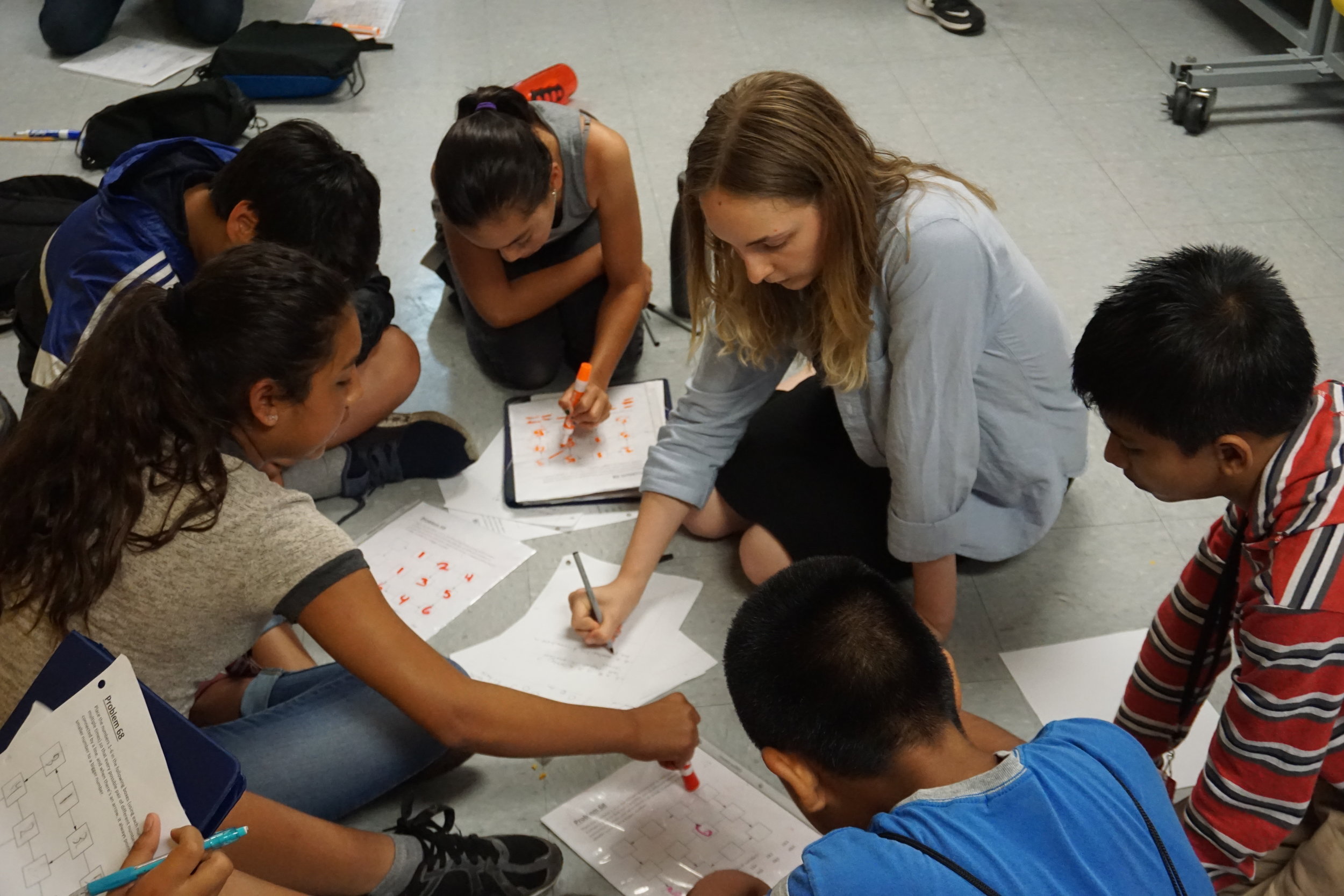










!["At first, I didn't felt [sic] like going to BEAM but then you supported me and I got accepted. Now I feel like BEAM is a family to me. Thank you."Daniel is a student at Young Oak Kim Academy.](https://images.squarespace-cdn.com/content/v1/561a6eede4b0448989c88951/1536615478385-EES7UQE1YXJJ7MF8UV5L/Daniel+P+Quote.jpg)
